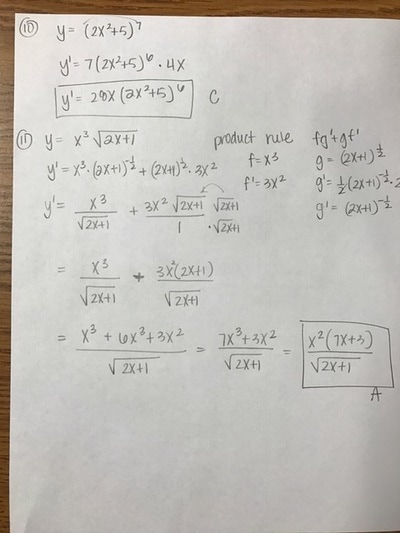
For students who are struggling through Real Analysis for the first time, however, I worry these technical problems will prove too challenging. Various questions about the way the oil is being used can be phrased as geometric questions about the shape of this curve.

Having a mastery of the basic definitions and the simplest of exercises will allow readers to follow the more technical explanations present in the problem sets. In 2 ADVANCED CALCULUS-,-A Clil-g Figure I-I Linked or unlinked higher dimensions, where our intuition is less trustworthy, we must make more use of analytical and algebraic tools than we do of pictures. In practice, I suspect this process will be best utilized by those who are already familiar with the mathematical content this is meant to supplement (read: undergraduate real analysis). Given Below Are The Parts With Their Respective Link Containing Questions And Solution: Part Number. This Article Contains Most-Difficult Questions Of Mathematics That Were Asked In JEE Mains And Advanced Previous Year Entrances. Thus, one could imagine studying the problems to learn techniques of problem-solving, which could then be applied to the exercises. JEE 2021 : Mathematics All-Time Most Difficult Previous Year Questions With Solutions.
#ADVANCED CALCULUS QUESTIONS FULL#
Note that the “problems” have full solutions provided, while the exercises do not. Because it is like understanding something by looking at small pieces. The calculus is divided into differential and integral calculus. The text is organized into seven chapters along topical lines, and each chapter is further divided into four sections: Definitions, Problems, Exercises (easy), and Exercises (hard). 12.1 The 3-D Coordinate System 12.2 Equations of Lines 12.3 Equations of Planes 12.4 Quadric Surfaces 12.5 Functions of Several Variables 12.6 Vector Functions 12.7 Calculus with Vector Functions 12.8 Tangent, Normal and Binormal Vectors 12.9 Arc Length with Vector Functions 12. T he calculus, more properly called analysis is the branch of mathematics studying the rate of change of quantities (which can be interpreted as slopes of curves) and the length, area, and volume of objects. It is a beautiful book, but really more appropriate for grad students (but then again, they insist on using Jordan measure instead of Lebesgue in the name of keeping things elementary.The text covers the usual range of topics in a one-semester course in real analysis: sets, limits and continuity, derivatives and applications, integrals and applications, and sequences and series. Contents Notation x 1 Basic Operations 1 2. Prescribed book: Problems and Solutions in Introductory and Advanced Matrix Calculus', 2nd edition by Willi-Hans Steeb and Yorick Hardy World Scienti c Publishing, Singapore 2016 v. Hilariously, Loomis and Sternberg was written for freshmen (at Harvard.), but its difficulty makes it suitable for few undergrads. Matrix Calculus by Willi-Hans Steeb International School for Scienti c Computing at University of Johannesburg.

Thus, the best one out of the three is probably Munkres, who goes out of his way to help students develop intuition.

Hubbard and Hubbard hide some of the more difficult proofs out of gentleness, while Spivak hides some proofs and writes some other very unclear, opaque, or just plain wrong ones out of lack of pedagogical experience (Calculus on Manifolds is his first book, written when he was 25).
#ADVANCED CALCULUS QUESTIONS HOW TO#
Each of them really only talk about manifolds in R^n, although Munkres, and especially Spivak give clues as to how to generalize them. In order of increasing difficulty, they are Hubbard and Hubbard, Munkres, and Spivak. (For example, see the Schaum's study guide on advanced calculus.) On the other extreme, Loomis and Sternberg covers calculus in the setting of Banach spaces, and introduces a large amount of abstract, linear, and multilinear algebra, in order to rigorously describe differentiable manifolds embedded in Banach spaces.Īs far as I'm aware, there are really only three undergrad books involving "calculus on manifolds": Spivak's Calculus on Manifolds, Munkres's Analysis on Manifolds, and Hubbard and Hubbard's Vector Calculus, Linear Algebra, and Differential Forms. On one extreme, I've seen an advanced calculus book with nary a proof. Thus "advanced calculus" could refer to (A) one-variable real analysis, (B) a computational course dealing with partial derivative, multiple integrals, and vector calculus, (C) a mathematically rigorous course on multivariable calculus (generally using differential forms), or (D) a first course in complex variables or Lebesgue theory. Based on the various texts I've browsed, the term "advanced calculus" can refer to anything beyond a one-year "mechanical" (i.e., the focus is computational facility rather than theoretical understanding) course in one-variable calculus.


 0 kommentar(er)
0 kommentar(er)
